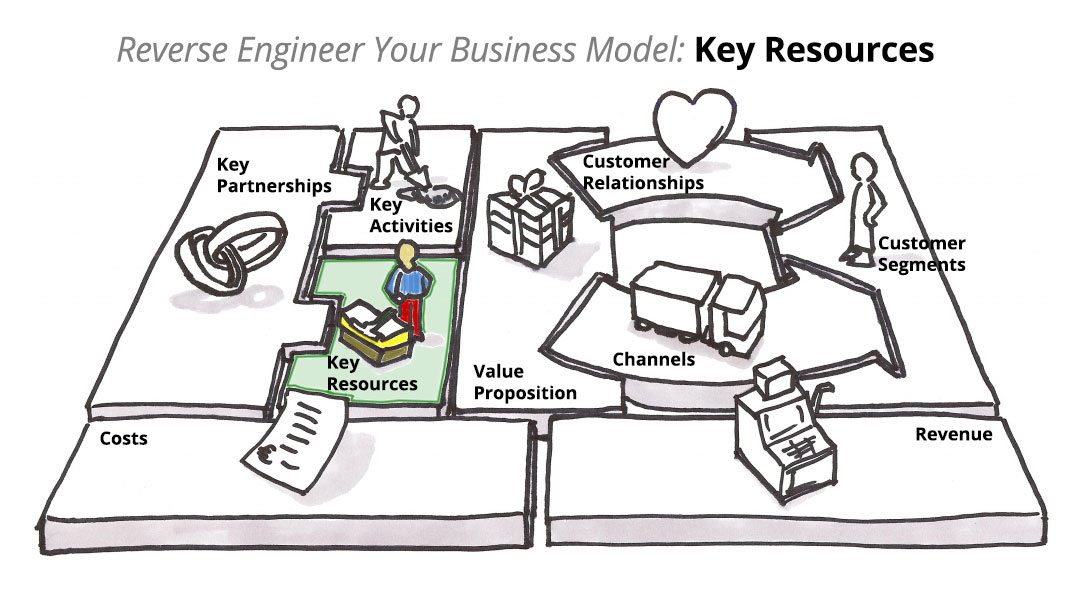
6 min read
When Building a Software Application, Let the “Why” Inform the “What”
When Building a Software Application, Let the “Why” Inform the “What”
This is Part 1 in our Reverse Engineer Your Business Series (view Part 2 & Part 3).
When Apple® released iTunes® and the iPod® in 2001, it began a silent revolution in consumer technology that is rapidly unfolding before us today. The revolution is in the way we think about the computer industry. Apple saw that the computer industry is not really about computers – it’s about you, your media and your relationships.
This post explores the impact of iTunes as a key resource in Apple’s business model and the resulting demise of my longstanding relationship with Microsoft.
The famous iPod slogan “1,000 songs in your pocket” describes its value proposition with artful succinctness: The iPod is about enabling an intimate proximity between you and your content. Period. It’s not about the device itself.
With the introduction of the iPhone® and the App Store, Apple took that intimacy to a new level. Now, as soon as I buy a song on my iPhone, it shows up instantly on my MacBook® and Apple TV®. My purchases have become ubiquitous. No matter where I am, there they are. No matter when I want a song, I can get it with a single touch.
iTunes: Key Resource and Trojan Horse
Today, not one of my personal computers or devices runs Windows®, or any Microsoft OS for that matter. But this wasn’t always the case. In fact, until 2007, I was a stalwart Windows fan, comfortably jumping into DOS with mastery of just about every Windows keyboard shortcut known to nerds.
In June 2007, with the announcement of the iPhone, I just couldn’t ignore Apple anymore. I took the plunge with the purchase of my first iPhone. Shortly after, I bought my first iTunes song: “Say” by John Mayer. Then came Season 1 of Lost. Once I started buying songs and other media from iTunes, I saw how Apple’s ecosystem would give my media ubiquity if only I owned the other devices. Next came my first MacBook Pro® and then an Apple TV. Today, I own just about every device in the Apple lineup, and my business runs almost exclusively on Apple hardware.
That’s the power of Apple’s platform strategy. It was as if my new iPhone and the songs I bought with it were a Trojan horse that toppled my 15-year streak of brand loyalty to Microsoft. The seamless connectedness of my Apple devices and the ubiquity of my media outweighed and eventually undermined my longstanding relationship with Microsoft.
If you reverse engineer how Apple built and then harnessed this key resource to cause this monumental shift in consumer dynamics, you may uncover a way to revolutionize your own industry. The first place to start is with your value proposition.
Do Your Key Resources Support Your Value Proposition?
Apple’s value proposition has always been to design technology that closes the gap between where you are now and where you want to be. This industry revolution, which began over a decade ago with iPod and iTunes, was only possible because Steve Jobs understood the essential role that the iTunes platform had in supporting their value proposition.
Though they may not have ever stated it explicitly, this value proposition is baked into all of Apple’s products and platforms. You want music? Done (iTunes). You want to chat face-to-face with a loved one abroad? Done (FaceTime). You want to connect to a custom built enterprise application? Done (the App Store). You want to send a text message to your wife without fiddling with the keyboard? Done (Siri).
You need to develop a compelling, customer-centric value proposition first, then allocate key resources to serve it. This requires focus and curation: Not every new feature or idea will fit your purpose. Be prepared for the agony of saying “no” more than “yes.” We’ve seen Apple unapologetically abandon and discontinue many of its innovations from the Motorolla ROKR to the Puck Mouse. They did this, despite huge criticism, because they had a vision that transcended any one of their past inventions. They were fixated on their value proposition and were committed to designing the key resources that served that value prop.
Capture a Meaningful “Why?” And Arm Your Software Developers Accordingly
These days, software plays a major role in the key resources of most businesses. Whether you find an off the shelf software-as-a-service solution, or if you’ve decided to build a custom app, there are a few things you should consider before investing in the customization or implementation of that software.
- Does my software development partner understand my business, my value proposition and the customer segments that I serve? Are they asking me questions that get the heart of my business objectives?
- Will they collaborate with me to define the requirements of my software application through interaction — not documentation — comparing every decision I make in designing the system to my ultimate business purpose?
- Will they capture my decisions into requirements (or “user stories”) that include the purpose of each requirement so that my development team can make decisions as I would? As an example: As an iTunes user, I would like to purchase a song from my mobile device and have it automatically appear on all of my authorized Apple devices so that I can listen to my music regardless of the device I’m using.
- Will they meet regularly to compare their deliverables with my expectations and make corrections as we go? Remember, even the most successful companies had to pivot (sometimes several times) before finding their groove. Be prepared to change your mind and ensure that your software development process accommodates it.
- Will they release the software early and often and respond to feedback as it’s available? Include your developers in the process and, together, you will be far more likely to develop a key resource that moves the needle for you and your business.
If you’ve ever designed a new product before, you know that it can be costly and frustrating. Many times, developers fail to execute on your vision and the resulting product never reaches its full potential.
Want to learn more?
If a custom product is key to delivering your value proposition, contact us to get clear on the strategic “Why?” and direct future investments accordingly.


Leave a Reply